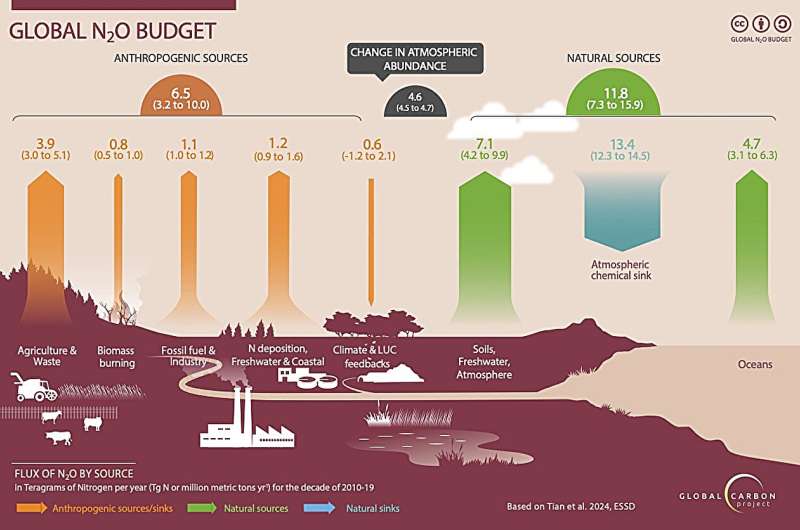Emissions of nitrous oxide, a greenhouse gas more potent than carbon dioxide or methane, continued to increase between 1980 and 2020, with over 10 million metric tons released into the atmosphere in 2020, primarily due to farming practices, according to a recent report by the Global Carbon Project.
The report “Global Nitrous Oxide Budget 2024,” led by researchers from Boston College and published in the journal Earth System Science Data, reveals that agricultural activities were responsible for 74% of human-driven nitrous oxide emissions in the 2010s, mainly from the use of chemical fertilizers and animal waste on croplands.
In 2020 and 2021, nitrous oxide emissions reached unprecedented levels, contributing to soil, water, and air pollution, as well as depleting the ozone layer and worsening climate change, as reported by an international team of researchers.
The study, conducted by 58 researchers from 55 organizations in 15 countries, found that agricultural emissions of nitrous oxide increased by 67% from 1980 to 2020, reaching 8 million metric tons in 2020.
Lead author of the report, Hanqin Tian, emphasized the urgent need to reduce nitrous oxide emissions to limit global temperature rise to 2°C as outlined in the Paris Agreement, stating that currently, there are no technologies available to remove nitrous oxide from the atmosphere.
2024-06-11 17:00:03
Original from phys.org
